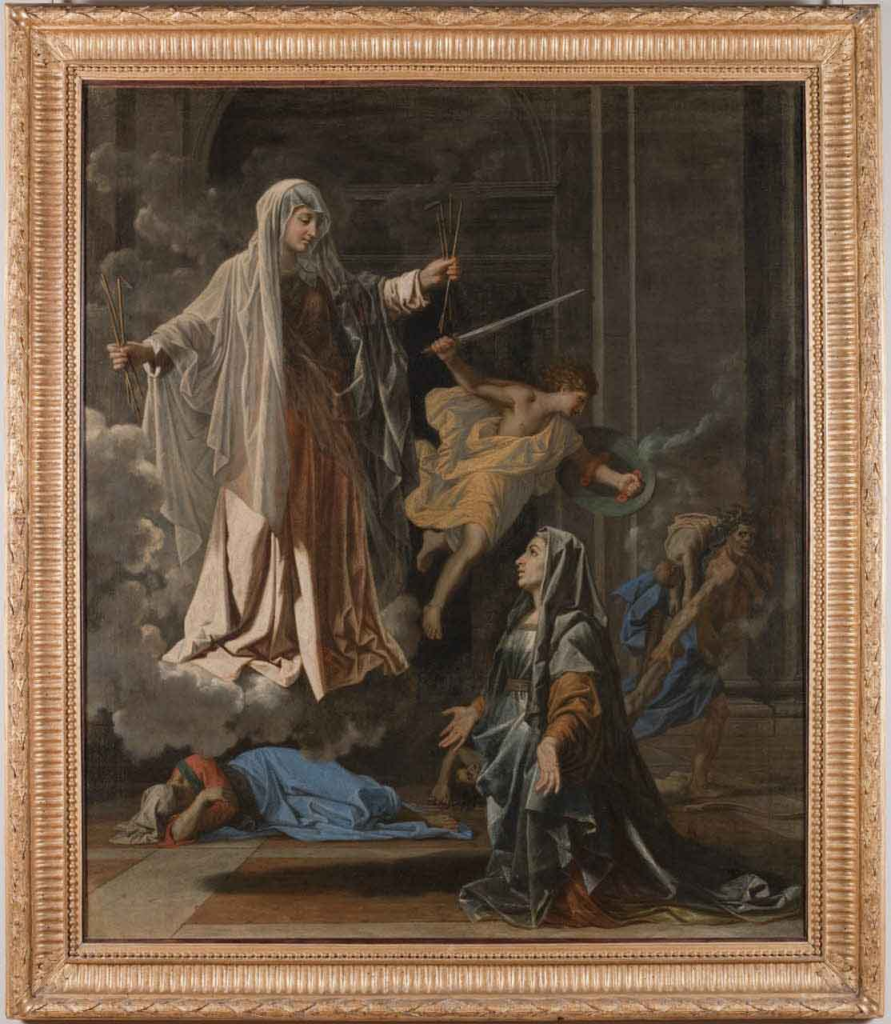March 8th and 9th, Saint John of God and Saint Frances of Rome

St Frances Announcing the End of the Plague in Rome, image courtesy of the Louvre
By Andrew Carpenter
It was likely not the intention in the 17th century, when Saints John of God and Frances of Rome were canonized, that their respective feast days of March 8th and 9th would be nicely dramatic for Lent 2021. Nevertheless, there’s a certain poetic aptness to their stories, both for the season of Lent and for our present circumstances
Born in 1495 in a small Portuguese town, the first 40 years of St John’s life involved darting across Europe, being separated from his family and ending up in Toledo, and then fighting throughout Europe in the service of the Emperor Charles V. After such a life he desired some way to atone, and he resolved to travel to Morocco that he might free Christians there or otherwise be martyred.
After this plan failed he found himself back in Spain, listening to the preaching of another John: John of Avila. Moved by the sermon or his failure in Africa or sorrow at his past life we do not know, but his repentance was so great that he began publicly beating himself and begging for mercy. This quickly led to his commitment to a sanitarium. It was here of all places that John found the consolation he sought; this time it was from yet another John, the St. John of scripture.
He counseled him to fix his attention not on such imposition of great hardships on himself, but rather in relieving others of hardship. John listened and founded a hospital which drew others desiring to serve the sick. After his death these disciples went on to found an order which survives to this day: the Brothers Hospitallers.
This was a lesson St. Frances of Rome understood a little more intuitively than St John of God. Born earlier, in 1384, to a wealthy family, these circumstances of birth had the usual consequence that she could not so easily choose her own fate: she desired to become a nun from a young age, but marriage to the son of another aristocratic family was arranged.
Nevertheless this was a happy marriage until the death of the husband. In the meanwhile, though, Frances still desired to serve as nuns did, so she and her sister-in-law, Vanozza, set out to use their husbands wealth for the good. The worst of the bubonic plague, the Black Death, ended before Frances was born, but the disease did not disappear from Europe. After giving birth to two sons and a daughter which distracted her (understandably!) from these charitable works, the black death struck Italy and took her second son. Rather than giving into despair, her own suffering led Frances to return back to self-sacrifice all the more, and she and Vanozza found themselves begging when their money ran out in order to have enough to run their hospital. As waves of plague continued to ravage Italy, Frances and Vanozza founded more hospitals which drew more women like them to serve; over time a unique, informal community of women who dedicated their lives to God and charity without formal vows formed. On Frances’s request they received formal papal sanction, and Frances became leader of it only upon her husband’s death.
While it’s important to discuss how saints before us can inspire our hopes during a modern time of disease, their lives hold more lessons than that. The example of John is important to remember for Lent: a spiritual life without any prayer and penance would be shaky any time of year. Nor can they stand alone: almsgiving is the often-forgotten third pillar of Advent and Lent, which St. John also lost sight of.
St. Frances reminds us that even amidst difficult times of widespread illness there is not only evil; these times can be and are occasions of virtue among trials, like these priests from the Archdiocese of Chicago who accepted the call to volunteer to anoint patients dying from the novel coronavirus back in April, a time when there was much more we didn’t know about the disease.
On a lighter note, St Frances is a patron of drivers; the tale goes that once on a dark night an angel lit the path before her so she could walk safely on it. Use your headlights at night.







